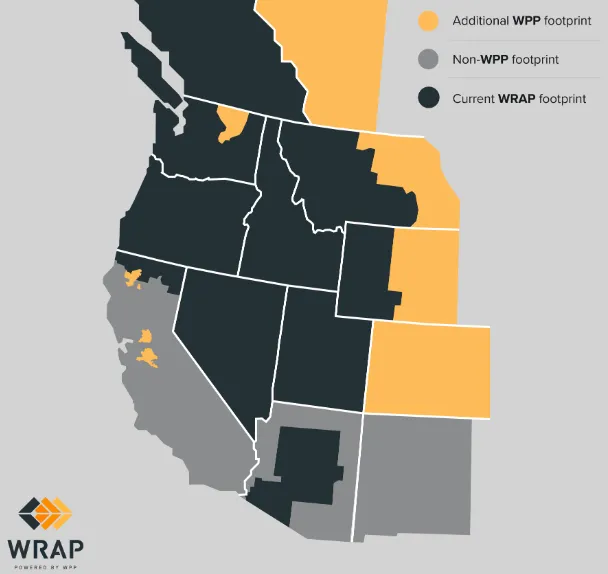Dive Brief:
- The Federal Energy Regulatory Commission on Friday approved a regional resource adequacy program that will allow Western utilities such as Arizona Public Service, PacifiCorp and Puget Sound Energy to share capacity.
- The Western Resource Adequacy Program, or WRAP, is set to take effect in mid-2025, with penalties for participants that fail to meet its requirements. However, participants can wait another three years before the requirements are binding on them.
- “Through increased coordination, we find that the WRAP has the potential to enhance resource adequacy planning, provide for the benchmarking of resource adequacy standards, and more effectively encourage the use of western regional resource diversity compared to the status quo,” FERC said.
Dive Insight:
The voluntary WRAP, proposed at FERC in August by the Western Power Pool, is designed to make sure the West has enough power supplies through a regional approach that is expected to be more efficient and less expensive than the existing utility-by-utility framework.
It aims to take advantage of operating efficiencies, regional diversity and sharing pooled resources, according to the power pool.
Twenty utilities and market participants across the western United States and Canada have signed up to participate.

FERC said the program will help the region anticipate its power supply needs as thermal power plants retire and are replaced by variable renewable energy resources such as wind and solar.
“The requirements of the proposed program can help to enhance price formation in the Western Interconnection by sending price signals to market participants regarding the availability of capacity and firm transmission service and the need for future market entry,” the agency said.
The WRAP includes two main components. Its “forward showing program” requires participants to show seven months ahead of winter and summer seasons that they have enough capacity to meet a required planning reserve margin based on their peak load. They must also show they reserved at least 75% of the transmission needed to deliver energy from the capacity to their load, FERC said. Participants that fail to satisfy those requirements face penalties.
The WRAP also has an “operations program” to address shortfalls ahead of an operating day. Participants that lack needed supply can call on resources from other power pool participants with surplus capacity.
During certain “capacity critical hours,” participants with excess capacity must hold back that capacity and are required to sell it to participants without enough resources to serve their real-time load.
The WRAP will include three stakeholder committees: the Committee of State Representatives, the Resource Adequacy Participant Committee, and the Program Review Committee, which will have representatives from various sectors such as independent power producers and public interest groups.
The WRAP’s participants are: Arizona Public Service; Avista; Bonneville Power Administration; Calpine; Chelan County Public Utility District; Clatskanie PUD; Eugene Water & Electric Board; Grant PUD; Idaho Power; Northwestern Energy; NV Energy; PacifiCorp; Portland General Electric; Powerex; PSE; Salt River Project; Seattle City Light; Shell Energy; Snohomish County PUD; and Tacoma Power.















